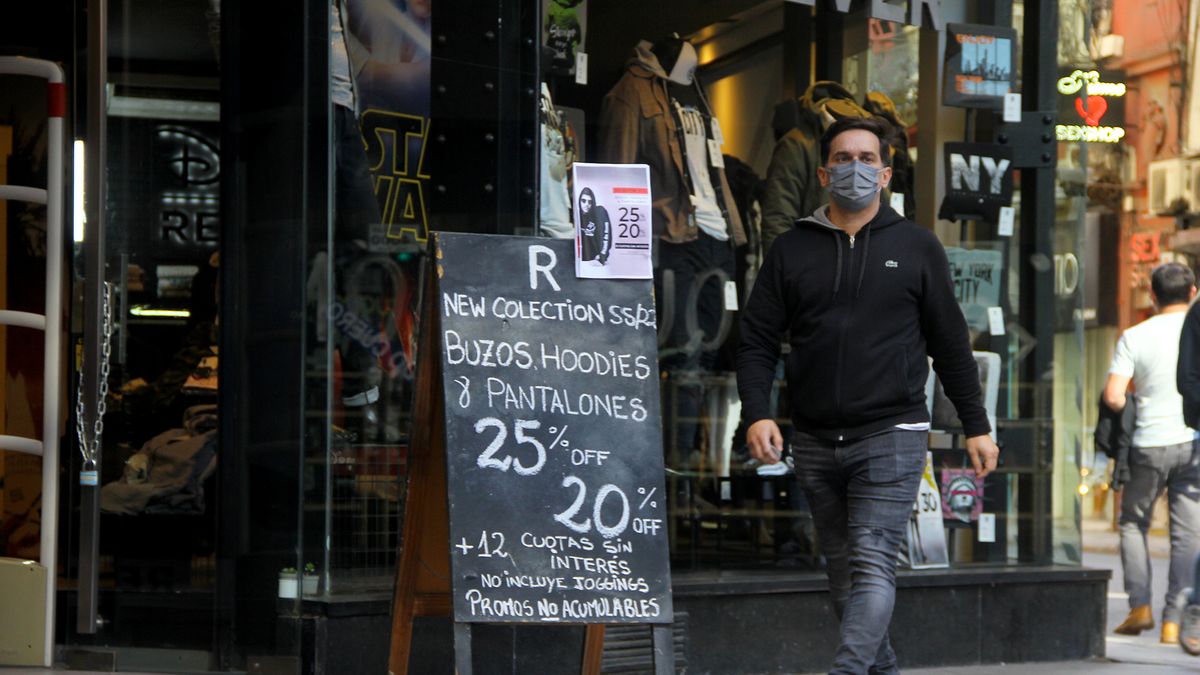This is how it emerges from the SME Retail Sales Index of the Argentine Confederation of Medium-sized Enterprises (CAME), prepared based on its monthly survey among 1,207 businesses in the country, carried out between October 3 and 5, 2022.
6342c72c2a5ae_706x357.png
Item-by-item sales
The sector of Pharmacy and Perfumery with an interannual rise of 8.1% in its sales, it was the only one that registered an increase in the month of September. The rest of the branches retracted, with the greatest fall accounted for by Textile and clothing (-17%).
1) Food and Drinks. Sales decreased 1% annually and 3.6% monthly, at constant values. The businesses consulted agreed that the month was marked by rising inflation and a drop in demand compared to previous months. Merchants commented on difficulties in replenishing merchandise, weekly price increases, and accumulation of debts with suppliers as the main problems of the month.
2) Bazaar, decoration, home textiles and furniture. The drop was 5.1% annually in September and 3% in the monthly comparison, at constant values. It was another month of decline for SMEs in the sector, which identified the increase in the financial cost of the last month, the lack of products and, above all, the price increases in each delivery of merchandise, as the justification for this sales behavior.
3) Footwear and leather goods. The sector’s sales fell 10.5% annually and 5.7% monthly in September, always measured at constant values. Most of the businesses consulted carried out actions to boost sales: reforms in the premises, incorporation of new product segments, early settlements, were some of the strategies to arouse the interest of a public that was not very enthusiastic, although the evolution of prices discouraged the consumer.
4) Pharmacy and perfumery. In this item there was an increase of 8.1% annually and 5.1% monthly. In addition, it is the only sector that has posted positive records for 4 consecutive months. Some pharmacies reported delays in social security payments, a situation that does not characterize the evolution of this month in particular since it has not yet been resolved for some time.
5) Hardware, electrical materials and construction materials. Retail activity fell 0.6% annually in September at constant values and 1% in the month-on-month comparison. Although this month was more stable, the price increases continued, but with less frequency and in smaller percentages than those registered during the months of July and August last. The situation surveyed is quite disparate between shops and products. Although September is usually a month of low activity, paints and parts for spare parts recorded better numbers than those reported by electrical materials.
6) Textile and clothing. Retail sales collapsed 17% annually in September and 1.3% in the monthly comparison. It was the item with the greatest retraction in the CAME retail index, and it is the fifth consecutive month in which its indicators have fallen. In addition, in September the most important decline of the year is registered. Stores are dealing with year-over-year price increases of over 100%, which describes why demand is shrinking so much. Some merchants expressed growing concern about a triad of elements that feed off each other and that explain this evolution: the increase in informality, the evolution of online sales and the rise in prices. Even so, the expectations for October, November and December are encouraging, due to Mother’s Day, the World Cup and the holidays.
Source: Ambito
David William is a talented author who has made a name for himself in the world of writing. He is a professional author who writes on a wide range of topics, from general interest to opinion news. David is currently working as a writer at 24 hours worlds where he brings his unique perspective and in-depth research to his articles, making them both informative and engaging.




